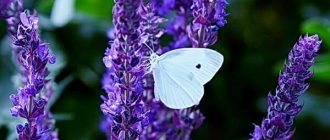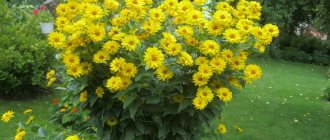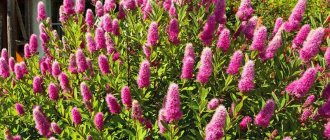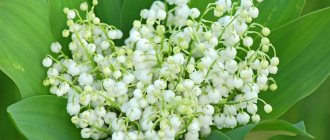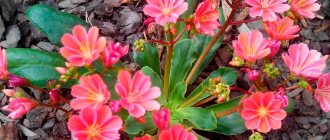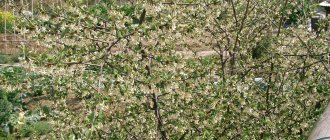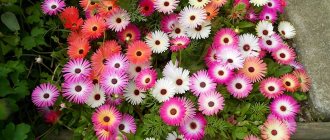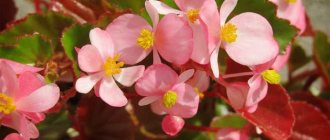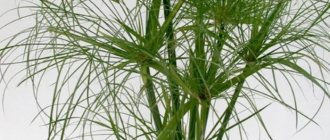- Through seedlings
- Watering and loosening
Oak sage is a low herbaceous shrub. Flowers, fruits, and leaves of the plant are used in cosmetology, folk medicine, cooking, and landscape design. With proper care, it blooms all season long, creating a beautiful spot of violet, blue or magenta in the garden.
Description of the bush
The second name for sage is salvia, which is translated from Latin as “to be healthy.” Therefore, it is used by pharmaceutical companies to produce medicinal drugs. The most common types of sage are:
- Salvia officinalis is a bush up to 70 cm high. The leaves are gray-green, narrow, elongated. The stem is densely covered with whitish fibers. Used in medicine, cooking, cosmetology. There are several varieties, the most common: Breeze, Nectar, Aibolit, Semko Patriarchal.
Salvia officinalis - Forest sage (oak sage) grows in nature on the edges of forests and on hillsides. This is a spicy plant with a herbaceous stem and lanceolate leaves. The inflorescences are purple or blue in color and have a spike-like shape. In turn, it is divided into low-growing varieties: their inflorescences bloom with blue, violet, purple flowers (for example, Salvia Blue Queen) and tall, spike-shaped inflorescences of which have a wider palette of colors: from white and pink to blue and purple (for example, Salvia Caradonna ).
- Sage sticky is a variety of forest sage. The leaves have an unusual color: yellow-green, for which it is also popular in ornamental gardening.
Note! In folk medicine, salvia leaves are brewed; the infusion helps with colds, as well as for their prevention.
Oak sage belongs to the Lamiaceae family. The height of this herbaceous shrub varies from 30 to 90 cm, its leaves are from 3.5 to 10 cm in length and from 1.5 to 3 cm in width. At the bottom the stem becomes woody over time, at the top it remains herbaceous. In winter, the top may freeze, but in the spring the plant quickly recovers.
The flowers are collected in whorls, which are located along the stem at a distance of 1.5 cm. It blooms all summer; fruits in the form of trihedral-spherical nuts are formed in August-September.
Characteristics of the plant and its main types
The name of this plant in Latin sounds like “salvia”, which means “to be healthy”.
Sage is a perennial subshrub and can grow over a meter in height. The stems of the plant have four sides and are almost completely covered with wedge-shaped foliage. Sage blades are small. Their length reaches 8 cm and width - 4 cm. The inflorescences of the plant can have the form of a panicle or spikelet. Sage buds have a rich hue. Flowering begins in mid-summer and continues until late autumn. The most common varieties of sage are:
- Sage oak forest mainacht (schneehegl). This plant is characterized by very long stems that produce large leaves. Salvia oak schneehegle blooms with bluish-purple flowers several times a year. The variety is very attached to the sun's rays, but despite this, it can withstand cold weather.
- Oak sage variety Schwellenburg. This variety has an original bud color – bright red. The inflorescences are much larger than those of other species. The flowering process is long. With proper care, the buds last for several months. This variety of sage is grown for decorative, not medicinal purposes.
- Sage Ostfriesland. This variety is distinguished by long stems and sharp leaves. The plant blooms throughout the summer. The buds can have either a blue or purple tint. The flowers take the form of corollas.
- Sage oak blauchegl. This plant lives for several years and reaches a height of half a meter. The leaves are green with a gray tint, oval-shaped, and wrinkled. Blue sage flowers. As a rule, there are many of them, and they are collected in an erect ear. Flowering occurs in mid-summer.
- Sage is lush. This variety is also quite popular. The plant reaches a height of 60 cm. The inflorescences have the shape of a complex spike. The flowers are deep purple.
The time and duration of sage flowering depends on human actions: if you remove the sluggish buds in time, new ones will soon appear in their place.
Growing
Clary sage - planting and care
In order for Salvia oakberry to take root well and grow quickly, it needs to choose a good place in the garden. The bushes grow quickly, so they should not be planted too close to each other. The distance to the next plant depends on its size; on average, planting is done according to the scheme: 50x50 or 60x60 cm.
Important! Sage has the ability to cross-pollinate, so it is better to plant varieties in different parts of the garden.
A place for planting is chosen that is well lit and warmed by the sun. It is recommended to cover sage for the winter, since it is a heat-loving plant. The crop is drought-resistant, and overwatering is dangerous for it. In regions with frosty winters it is grown as an annual plant.
The soil
Oak sage does not make great demands on the soil. The most important condition is that groundwater should not lie too close to the surface. For growing salvia, both soil mixture for indoor plants and ordinary garden soil are suitable.
In the fall, the soil is prepared for spring planting: the area is dug up, flavored with humus and phosphorus-potassium fertilizers. The acidity of the soil should be normal.
Note! Excessive fertilization of the soil will lead to the fact that the green part of the bush will develop well, and the flowers will be small and inexpressive.
Planting and care
The root system of adult sage is very well developed. It ensures high winter hardiness and successful restoration of dead shoots in the spring. However, in order to grow salvia on your site, which will bloom brightly and continuously, you will have to use the seedling method (Figure 4).
Note: There is no need to grow full-fledged seedlings. It is enough to let the first sprouts emerging from the seeds hatch, and you can move the crop into open ground. Sage is unpretentious and frost-resistant, so it can easily take root in a new place.
To grow sage, you need to choose the right site for it. It is desirable that the place be protected from drafts, but warmed up well by the sun's rays. At the same time, salvia will feel good in partial shade, although the flowering will not be as bright and intense. The soil should be loamy and neutral acidity. About a month before planting, it is dug up and phosphorus-potassium fertilizers are applied, and immediately before moving the seedlings, additional nitrogen preparations are added.
Planting oak sage is not difficult. In the prepared area, dig the required number of holes with a depth of no more than 4 cm. A little water is poured into each, after which the seedling is immersed in moist soil. Next, its base is sprinkled with soil and watered again.
Figure 4. Planting is carried out in sunny areas, protected from drafts
Caring for sage is also not difficult. The main thing is to provide it with timely but moderate watering. Moisture is added in the morning or evening so that it does not evaporate so quickly. After the procedure, loosening is carried out to remove weeds. Another feature of care is the shortening of shoots. The procedure is carried out every 45-60 days, stopping during the flowering period. If you follow these simple rules, salvia can grow in one place for 10 years.
Reproduction
It is produced in several ways: by seeds, cuttings, dividing the bush, and air layering. The gardener decides which method to use after studying the features of each of them.
Cuttings
Through seedlings
Sage - planting and care in open ground
Seeds can be sown directly into the ground in spring or autumn, or by first growing seedlings. The second method is used more often, since sage grows slowly when sown directly into the ground. Sowing of seedlings usually begins at the end of winter.
Drainage, for example, expanded clay, is placed at the bottom of the container. Then light, loose soil is poured out. Seeds are sown on top, sprinkled with a little soil and slightly moistened. To keep moisture in the soil for a long time, you can use a hydrogel. It is soaked in water, in which it soon swells, and mixed with the soil.
Important! Since the seeds of oak sage are small, they should not be sprinkled too much: under a thick layer of soil they may not sprout. The top of the container is covered with glass or plastic film.
After the fourth leaf appears, the seedlings dive into separate pots. Before the beginning of summer, the seedlings have time to get stronger. After about 2.5 months, the seedlings can be planted in open ground, having previously hardened them. To do this, in April they are taken out into the air for several hours a day.
At first it should be a shady place, then you can gradually accustom the seedlings to direct sunlight. Also, several sage bushes can be left in pots for growing on windowsills, creating favorable conditions for them.
Seeds in open ground
Planting sage using this method is done in early spring or late autumn. Here's how it's done:
- the soil is dug up, leveled with a rake, sprinkled with calcined sand, on which the seeds are laid out;
- sand is sprinkled on top, the bed is moistened and covered with film;
- The planting is periodically ventilated, but care must be taken to ensure that the bed always remains moist.
In about 3 weeks the sprouts will emerge. After 3-4 leaves appear, the film is removed.
Sage seeds
Cuttings
To do this, the shoot is cut with a sharp knife just below the node, about 10 cm long, and placed in a glass of water. After 2-3 weeks, roots form, visible through the glass. When they reach a length of 2 cm, the shoot is planted in a pot. The soil should not be too nutritious.
At first, the plant is provided with increased humidity. To do this, the cutting is covered with a glass jar or plastic film, but the leaves should not touch the surface of the covering material. The greenhouse must be ventilated periodically to prevent the cuttings from contracting a fungal disease.
Important! The optimal indoor air temperature is 20°C. When the seedlings have taken root, they can be planted in larger pots for indoor use or in open ground. After a month, sage can be fed with a weakly concentrated solution of fertilizer for flower plants.
Pots for planting should be deep, since the root system of salvia is well branched. The stems of the bushes are flexible, the outermost ones spread along the ground, so they need support. Or in this case, you can use another method of propagating the plant.
Reproduction by layering
When the shoot comes into contact with moist soil, roots form at the nodes of the plant. Therefore, if a gardener wants to get sage shoots, he needs to ensure that the soil at the point of contact with the stem is always moist. Also, for reliability, the shoot can be pinned to the ground with something and lightly sprinkled.
Dividing the bush
This method is used in the southern regions. The plant is divided at the end of summer. The sage is carefully dug up, the root is divided into parts. The delenka must have a root system and at least one stem. Each dug-out shoot is planted in a separate planting hole.
Dividing the bush
Medicinal properties of the plant
This type of plant is mainly used in the same way as its more powerful cousin, salvia officinalis. It has a fairly strong anti-inflammatory and analgesic effect. The leaves of this plant help fight many ailments and are included in many medicinal preparations. But freshly picked leaves of this plant are also used for topical use.
In this case, it can help with various skin diseases, wounds, and ulcers. It is also used as a seasoning in cooking. Various tinctures, decoctions, ointments and oils are prepared from dried leaves, which have a good strengthening effect, relieve inflammation, improve the digestion process and have an antidiabetic effect.
Plant care
Sage of fortunetellers - what kind of plant, description, where it grows
It consists of timely weeding, watering, fertilizing, pruning the plant, and protecting it from diseases and pests.
Watering and loosening
Irrigation must be timely. In this case, watering should not be abundant. The procedure is performed in the morning or evening. When watering at noon, the sun's rays can burn the delicate leaves, and this will negatively affect the plant as a whole.
Loosening is also a necessary procedure. After it, moisture is retained in the ground, and the roots have access to oxygen. In addition, weeds that take away nutrients from the plant are simultaneously removed.
Fertilizer
Every spring you need to feed the bushes. First, nitrogen fertilizers are used to increase green mass. Then, once every 3 weeks, liquid fertilizers are applied, for example, an aqueous solution of manure (1:10) or an infusion of weeds of the same concentration. Mineral fertilizers are used in the fall.
Nitrogen fertilizers
Trimming
This is an important procedure for the beautiful formation of a bush. If it is not produced, the sage will stretch out and quickly age. Pruning will provoke the awakening and growth of lateral buds. As a result, the bush will intensively grow new shoots.
Important! Bushes are trimmed in spring and autumn. Dry spikelets after flowering are also trimmed. This procedure may encourage the plant to bloom again. Dry, broken branches are also removed.
Diseases and pests
Sage is a spicy, medicinal plant that can independently fight various diseases. Therefore, it is little susceptible to various misfortunes. The reason for the poor condition of the bush may be improper care.
- Mold can form when there is too much moisture. Therefore, stagnation of water in the soil should not be allowed. At the first appearance of mold, the plant is sprayed with a sulfur solution.
- Slugs and spider mites can appear in plantings that are too dense. Onion and garlic tincture is used as a control method. To ensure that the solution sticks well to the greens, laundry soap is added to the infusion.
Important! Considering that sage is used in cooking and folk medicine, it is impossible to use chemicals to combat diseases and pests.
Sage diseases and measures to combat them
Sage's resistance to diseases and pests can be classified as high. The plant rarely gets sick - mainly due to improper care.
Sage diseases:
- leaf spot;
- root cancer;
- downy mildew;
- powdery mildew;
- rust.
Insect pests of sage:
- sage mite;
- sand slugger;
- sage gnat;
- spider mite;
- thrips.
For treatment, use fungicidal drugs.
Usually, the infected bush and plants nearby are treated. The products are used in accordance with the instructions supplied with them.
Folk method of insect control:
- chop 2 large heads of garlic;
- pour a liter of water and leave in a dark place for a week to let the solution brew;
- then strain;
- add a little laundry soap;
- spray the bush, the ground around and neighboring plants;
- the procedure can be repeated.
Harvesting
It is produced in summer and autumn. The first time is at the end of June during the blooming of the inflorescences. It is at this time that sage contains the largest amount of essential oils necessary for use in cooking, cosmetology and for medicinal purposes.
Mow the plant almost to the roots along with flowers and stems. At the end of September, the autumn collection of medicinal herbs is carried out. By this time, greenery appears on the bushes again, growing wildly after the previous pruning. Harvesting is done in dry weather.
Oak sage shrub and its properties
Sage is a perennial flowering low shrub. However, its value lies not so much in its attractive appearance, but in its pronounced medicinal properties (Figure 1).
Figure 1. Sage is a valuable ornamental and medicinal plant
It is noteworthy that all varieties of sage are used in landscape design, regardless of the color of the flowers. In medicine, almost all parts of the plant are used, from roots to inflorescences. But it is important that medicinal raw materials should be prepared in the morning in dry weather and before flowering begins. If the collection and preparation were carried out correctly, the plant retains its beneficial properties for two years.
Salvia has many healing properties. First of all, it calms the nervous system and relieves stress, but can also be used for bactericidal and anti-inflammatory purposes.
Varieties of varieties
Breeders have developed many varieties of oak sage. The most famous of them are:
- Sage Ostfritsland. The length of the branched stems is about 40 cm, the leaves are slightly wrinkled. Blooms all summer with purple and blue-violet flowers.
- Mainacht is a taller bush. Its inflorescences are purple and its leaves are oblong. Blooms several times per season.
Sage
- Schwellenburg differs from other varieties in its purple and red inflorescences. Widely used in gardens for decoration.
- Forest sage Amethyst (Ametist) is a dense bush with dense candles of pink-violet inflorescences. After flowering, the bush remains neat and retains its shape.
- Forest sage Blauhugel is one of the unpretentious and cold-resistant shrubs. It has fragrant leaves of gray-green color, purple inflorescences. Blooms profusely in June and July.
- Oak sage Caradonna. The height of the bush is 70-80 cm, the inflorescences are lilac, the leaves are bluish-green. Blooms from early summer until frost.
In addition to those listed, there are many more varieties of oak sage, suitable for decorating a garden plot and characterized by a long flowering period.
Sage as a medicinal plant
Since ancient times, it was believed that this plant has not only magical, but also medicinal properties. Oak sage is also called forest sage. The flowering period of this plant falls in the first months of June and ends around September. Many people who were believed to have magical powers used this herb in the process of cleansing homes and homes, as well as to create potions that evoke warm feelings of sympathy and love for the creator.
But today this plant is valued more for its medicinal properties. Thanks to its composition, oak sage has many beneficial properties. The leaves of this plant are used to create a variety of decoctions and tinctures. They can be prepared for the winter. On average, their shelf life is about one and a half years. Such agents and preparations have anti-inflammatory, antitoxic, soothing properties, tone blood vessels and are good antiseptics.
Benefits of sage
Sage is especially useful for the female body, as it contains female phytohormones. Sage treats frigidity and has a good rejuvenating effect. In ancient times, an infusion of sage leaves and juice was given to women with infertility, because it strengthens the walls of the uterus and promotes successful conception. Helps reduce nervousness during menopause. Facilitates the course of many inflammatory gynecological diseases.
An infusion of dry leaves helps:
- As an expectorant for various bronchitis.
- Helps with kidney diseases, it is a good diuretic.
- It also helps with gastritis, sore throat, gum disease, and toothache.
- Has a hemostatic and astringent effect.
- Strengthens memory and helps maintain clarity of thinking.
- Fights fungal skin diseases, relieves symptoms of psoriasis.
Be healthy! We are waiting for your advice!
Sage in landscape design
Most often, selective varieties (nutmeg, salvia brilliantis) are used to decorate a garden plot. Perennials are used to create flower beds, mixboards and flower beds. Designers use salvia in aromatic front gardens and herb beds.
Sage goes well with mint, decorative varieties of onions, thyme and basil. In addition, the plant is also used by aromatherapists, who have long discovered its powerful calming properties.
As you already understand, there is nothing difficult in planting and growing salvia. To ensure that it decorates your garden for a long time, just follow simple rules of care.
Growing plants at home
This plant can be grown at home without much effort. It is unlikely that anyone will have problems growing oak sage at home. Photos of this plant are quite often found among amateur gardeners. In order to ensure good conditions for it, you should:
- arrange good drainage in the pot (you can use perlite for this);
- watering should not be every day, but at the same time quite abundant;
- good lighting should be at least 6-8 hours a day;
- You should not place the potted plant in drafts, because it does not like them;
- It is recommended to give sage a shower once a month.
General information about salvia oakberry
Plant characteristics:
- Its branches are tall, reaching 120 cm.
- The leaves are large, ellipsoidal, ribbed, pointed at the ends.
- The flowers are collected in inflorescences and are painted in red, lilac, violet, white or purple tones.
- The plants are unpretentious. Perennial species are frost-resistant and can withstand cold temperatures down to -18 degrees.
Salvia oakberry is grown as a perennial plant.
Today there are about 700 species of salvia. Of all the types, it is considered the easiest to care for and frost-resistant. In the wild, it can be found in the foothills of the Crimea, on the European territory of Russia, and in the Caucasus. It is also found in some places in Central Asia and Siberia. Salvia grows along river banks and on mountain slopes.
This is not the tallest type of sage; the length of straight branches can reach only 60 cm. They are heavily branched and pubescent. The leaves at the bottom of the branches are large, oblong, glabrous, pointed at the ends. In the upper part the leaves are much smaller in size. The inflorescences are long, up to 40 cm. The flowering period lasts all summer.
Planting seedlings in the ground
At the beginning of June, grown and hardened seedlings can be planted in the ground. Before this, already from the beginning of May, it can be taken out in the sun. The soil needs to be prepared in the fall by adding humus and mineral fertilizers: the soil should not be acidic. If necessary, add peat and sand.
Plants should be placed at least 25 cm apart. This scheme can be perceived as temporary. In the second year, you can replant sage individually along the paths.
Caring for seedlings does not require any special tricks: weeding, watering, fertilizing with liquid fertilizers once a decade, and mineral fertilizers three times a season. Planted seedlings need to be watered with warm water, or warmed in the sun.
